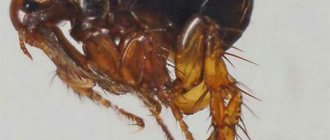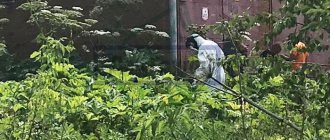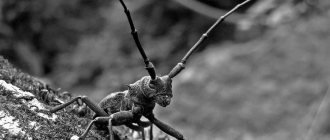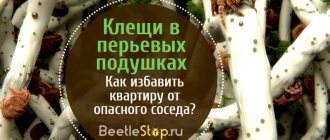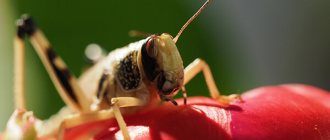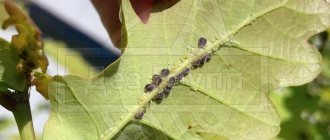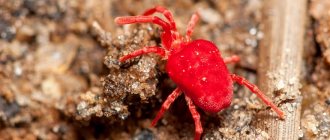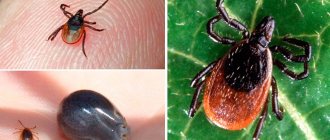Sometimes peculiar growths can be observed on the leaves or stems of many plants, including oak, maple, bird cherry, birch and others. They can be red, white, green, spherical or oblong, shiny or dull.
This issue is often discussed on numerous forums - such an original, sometimes even cute, manifestation of the disease. What is behind these growths? The growths on the leaves are called galls . So, galls are formations on leaves, stems, and buds of plants, provoked by insect bites - gall mites. As a rule, galls themselves are harmless, but they indicate a rather serious problem with the plant. Normally, galls should not be visible on the plant at all. If growths are found on a large part of the plant crown, then this is abnormal and must be dealt with.
Galls: description of the disease.
Galls are formations on leaves, stems, and buds of plants, caused by insect bites - gall mites.
Galls can be red, white, green, spherical or oblong, shiny or dull. As a rule, galls themselves are harmless, but they indicate a rather serious problem with the plant. Normally, galls should not be visible on the plant at all. If growths are found on a large part of the plant crown, then this is abnormal and must be dealt with.
The mechanism of gall formation is similar to the development of an inflammatory response in the human body. When injured, the immune system promotes increased formation of additional tissue at the site of injury. The same thing happens with plants. By forming galls, plants try to protect the site of injury (insect bite). The formation of galls is also facilitated by the pests themselves, secreting saliva and thereby increasingly irritating the plant tissue. Galls can appear not only on leaves, stems, but also on buds, roots or flowers. They can be almost invisible or grow to enormous sizes, causing real deformation of the tree.
Among all types of galls, the greatest danger to a tree is caused by crown galls in the form of a brown, warty growth on the trunk or roots, which is caused by bacteria. If the crown gall wraps circularly around the trunk, the consequences for the tree can be disastrous.
A more common variety is galls that appear on leaves and are caused by gall mites . Gall mites are four-legged insects of the superfamily of arachnids, the order of acariform mites. Gall mites are very small - their size does not exceed 0.1-0.6 mm. They do not have organs of vision or breathing, they feed on the contents of the cell, causing the destruction of plant tissues and various deformations and deformities of leaves and shoots. Sometimes most of the insect's life cycle occurs inside the galls. For example, a female gallworm insect pierces a leaf bud of an oak tree and lays a larva there. A ring-shaped growth begins to develop around the larva. After only 5-6 months, the developed larva turns into a gall worm, gnaws through the gall that shelters it and climbs out. Adult ticks overwinter under the bud scales. There are up to 1.5 thousand of them in one kidney. In early spring, before the buds open, females lay eggs in the same place where they overwintered. The hatched larvae feed inside the buds. During the development of the first leaves, the larvae turn into females of a new generation, which penetrate near the central vein into the leaf tissue, where they make passages and suck out the juices. At the site of mite penetration and feeding, leaf tissues grow and flat yellowish-brown swellings (galls) form on the surface, which later turn black and dry out. They can be mistaken for scab spots.
Growths on the leaves of the gall mite Eriophyes tiliae tiliae ripen inside the white or red galls of the linden tree ; Numismatic gallworm Neuroterus numismalis – inside ring-shaped growths on oak ; aspen red gall midge – inside spherical swellings on aspen ; thrombidiform mite - inside pinkish outgrowths on bird cherry ; Focke mite - inside red growths on maple ; linden gall mite - inside vertically located sac-like outgrowths 0.5-0.8 cm high on linden ; birch felt mite - inside velvety crimson formations on birch , etc. About 100 species of gall mites are known in Russia, and each plant has its own parasites. As a result of metabolic disturbances, the galls become enriched in tannins. This applies primarily to oak , sumac or pistachio galls .
How are galls used in medicine, what are they made from?
The galls are collected in the last month of summer. Harmful to plants, they are widely used in folk medicine.
So, for example:
- Gall tincture is used to rinse the mouth for fluxes. Also used to treat frostbitten parts of the body;
- Tincture mixed with vinegar is used to treat diseases of the ENT organs;
- It is known to have an activating effect on the hair growth process;
- Helps accelerate the healing of cracked lips and burns;
- They are also used to treat eye ulcers (for both external and internal use);
- Used to strengthen the digestive system;
- Infusions are taken internally for the treatment of diarrhea;
- Used as an adjuvant in the treatment of tuberculosis;
- Lotions and rubs from the infusion of galls are used to treat various diseases of the epidermis: insect bites, lichen, ulcers;
- Helps in the treatment of leucorrhoea.
Brewed dried galls are taken internally.
For lotions use a decoction of:
- One glass gal
- Liter of boiled water
The mixture is boiled for five minutes, after which the broth should settle and be filtered.
Galls on the leaves are widely known in folk medicine. Tinctures of these formations are used both internally and externally.
Galls: symptoms of the disease.
The galls are arranged in rows along the central vein of the pear leaves. In an apple tree they are scattered throughout the leaf, especially on the underside. When heavily infested, the leaf blade becomes covered with a solid black tumor, bordered by a narrow strip of healthy tissue. Females lay eggs in the galls, and the larvae that emerge from them settle on new young leaves and shoots. In the fall, from late August to October, some mites move under the scales of newly formed buds, feed by sucking juices, and hibernate. During the season, the pest develops in 2-3 generations. The harm caused by the mite is that damaged leaves dry out and fall prematurely during the growing season, the annual growth of shoots weakens, and the buds do not develop normally and, as a rule, die. Fruit yield is reduced. If insects multiply heavily, the buds and ovaries may be damaged. The pear gall mite is especially common in young orchards.
table of contents
- 1History of cecidology
- 2Living organisms that produce plant galls
- 3Production of plant bile
- 4 Classification of various forms of gall 4.1 Organoid galls
- 4.2 Histoid galls 4.2.1 Felt galls
- 4.2.2 Curls and folds of leaves
- 4.2.3 Sac galls
- 4.2.4 Wall galls
- 4.2.5 Bone marrow galls
- 7.1 Individual evidence
Galls: control measures and disease prevention.
Galls spoil the appearance of an ornamental plant and reduce the crown area involved in the process of photosynthesis. Gall mites can become sources of infection. The fight against gall mites consists mainly of preventive treatment. If growths on the leaves have already appeared, then the fight becomes more difficult. Already damaged leaf plate cannot be restored. In this case, treatments are carried out with systemic acaricides and pyrethroid insecticides. A properly selected acaricide will stop the development of the pest population. And, conversely, incorrectly selected drugs can even spur the activity of the tick, making further fight difficult.
Insects have a unique ability to adapt to any poison. In gall mites, this adaptation occurs very quickly. Therefore, it is important to select an insecticide that is effective on a specific type of pest in order to destroy the entire population at once (or in several treatments, depending on the time of treatment, the degree of infection and the selected drugs.
1. Collecting and burning fallen damaged leaves.
2. Spraying trees with 10% karbofos (75-90 g per 10 l of water), 20% keltan (20 g per 10 l of water), 10% isofen (60 g per 10 l of water) in the spring during pinking of buds.
3. Treatment with a suspension of colloidal sulfur (100 g per 10 liters of water) immediately after flowering. Treatments should be repeated in June and July if young orchards are heavily infested with the pest.
History of cecidology
Although the economic benefits of some galls have long been known to man, some gall apples in the oaks were used, for example, for the production of iron gall ink and as a supplier of tannins to the tannery; scientific research in this area of biology only began in the late 17th century. The first scientific description of the phenomenon of gall formation in plants was Hippocrates Cos; however, he considered the observed growths only to be specific to certain plant fruits and did not recognize any connection between parasites and the formation of galls.
The first Marcello Malpighi led with his book Idea Anatome Plantarum
breakthrough in cecidology.
There he described 60 different forms of gall in the chapter De Gallis
and for the first time attempted to systematize and define the phenomenon of gall formation.
sources
Individual evidence
- See, for example, Jürgen Martin: "Ulmer Wundarzney".
Introduction - Text - Dictionary on the monument of German special prose of the 15th century. Königshausen and Neumann, Würzburg, 1991 (=
Würzburg Historical-Medical Research.
Vol. 52), ISBN 3-88479-801-4 (also Würzburg medical dissertation, 1990), p. 129 (
galla
). - Plant galls and caecidology: What are plant galls?
cecidology.blogspot.com - Rolf Beiderbeck, Ingo Koevet: Plant galls along the way.
Origin and destination. ISBN 3-440-04751-2.
literature
German speaking
- Heiko Bellmann: Bees, wasps, ants. Hymenoptera of Central Europe. Cosmos (Franckh-Kosmos), 2005, ISBN 3-440-09690-4.
- Ernst Küster: Plant galls. Leipzig 1911
- Rolf Beiderbeck and Ingo Koevet: Clockwork Gauls along the way - origin and purpose. Cosmos Verlag, 1979, ISBN 3-440-04751-2.
- Herbert Boer: Tables for identifying galls (zoo and phytocecidia) on plants of Central and Northern Europe.
Gustav Fischer Verlag, Jena, 1964/65. - G. Jerome: Contribution to the study of European zoocecidia and their distribution. Gross, Bart and Co., Breslau 1890.
- Karl Cech: New division of the Gaul plant. Gross, Barth & Co., Düsseldorf 1858, urn:nbn:de:hbz:061:1-115216.
English speaking
- Ron Russo: A Field Guide to the Clockwork Galls of California and Other Western States. University of California Press, London, 2006, ISBN 0-520-24886-4.
- Arnold Darlington: A Pocket Encyclopedia of Colored Plant Galls. Blandford Press, Dorset, 1968, ISBN 0-7137-0471-3.
- Margaret Redfern, Peter Shirley: British Plant Galls: Identification of Galls on Plants and Fungi. Field Research Council, Shropshire 2002, ISBN 1-85153-214-5.
Abandoned bile
Abandoned galls often serve as refuge from Equilines, which move into bile after the bile generator has already left the bile, or remove or eat the bile generator from the bile. In some cases, the presence of equilins changes the shape of the occupied bile so that they can be distinguished externally from unoccupied bile and bile in which their original producers still reside.
In addition to equines, secondary and tertiary parasites are also found in galls. The presence of these parasites is often associated with the death of the bile producer.
How to treat
It is advisable to treat powdery mildew or brown spot on oak when the first signs appear. If the disease appeared more than a week ago, then it is already useless to fight it. To get rid of the disease, you need to:
- Trim the tree, removing all damaged trunks and leaves.
- Replace the top layer of soil in the tree trunk circle.
- Spray the tree with special products such as Fundazol, Topaz, Vitaros.
If the tree shows signs of necrosis or vascular diseases, then the tree can no longer be helped. Measures to combat these diseases consist of their prevention. It is important to regularly trim trees and promptly cover wounds with varnish or bactericidal agents.
To combat pests, trees are regularly sprayed with fungicides. Affected leaves and branches must be removed and burned. A good way to prevent the spread of diseases and pests is to collect and destroy fallen leaves.
Balls on oak leaves what are they?
Even as a child, older people told me about oak (ink) nuts, or galls, from which ink was obtained in the past - hence the name. Then I lived in an area where there were many oak trees, but I was unable to find nuts (or other atypical formations) on any of them.
I later learned that oak nuts contain a lot of tannins - natural polyphenols (substances that have several -OH groups attached to a benzene ring). Tannins produce a complex with ferric iron salts that is almost black in color - this is what the production of ink was based on.
Even in ancient Rome, copper sulfate was a commercial product, but even then there were unscrupulous sellers. In particular, copper sulfate was diluted with cheaper iron sulfate. To detect a fake, oak nuts were used: the black color indicated the presence of iron.
Nowadays, galls are used to obtain tannin, which is used in medicine.
It turns out that oak nuts are not natural oak formations, but the result of the vital activity of parasitic insects of the nutworm family (Cynipidae). Galls can form not only on oak, but also on a number of other plants under the influence of a wide variety of parasites: viruses, bacteria, nematodes, fungi, but the most common cause of galls is various arthropods (mites, aphids, gall midges, gallworms).
If I had seen photographs (drawings) of oak nuts before, I did not remember them. For many years I periodically examined oak branches and branches in the hope of finding galls, but without success. One day I was walking through the forest. It was autumn and most of the leaves had fallen. On the ground I found an oak leaf on which strange balls had grown. Most likely, these were oak nuts. I took them with me, found photographs of ink nuts on the Internet and compared them - the last doubts disappeared.
